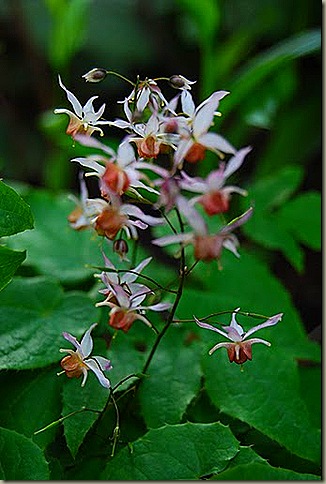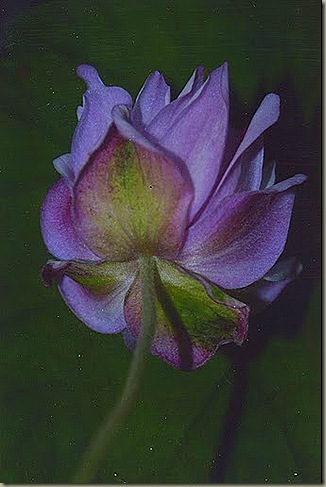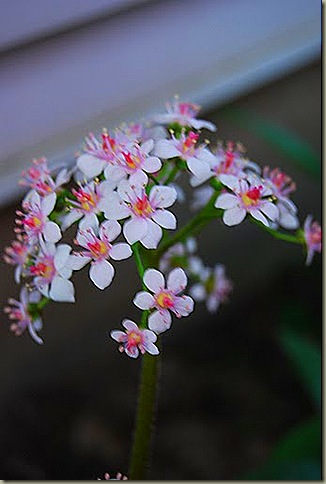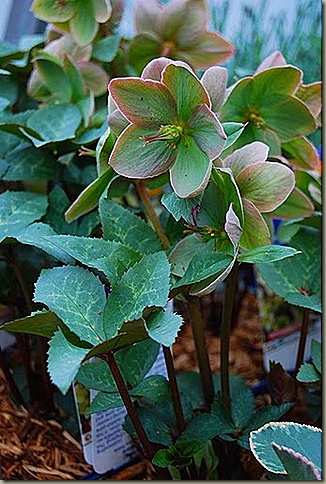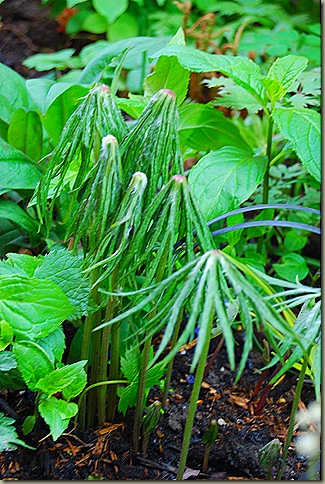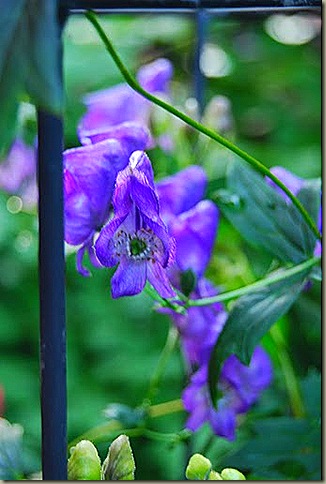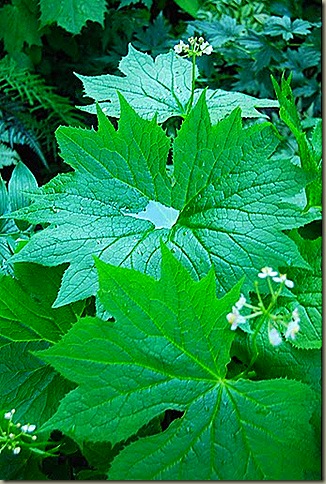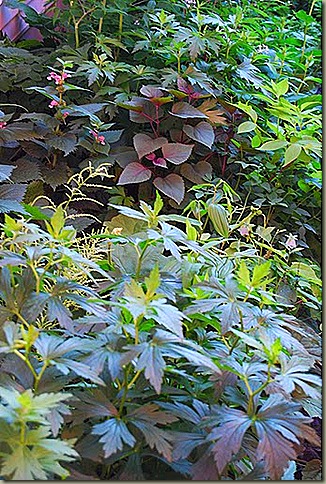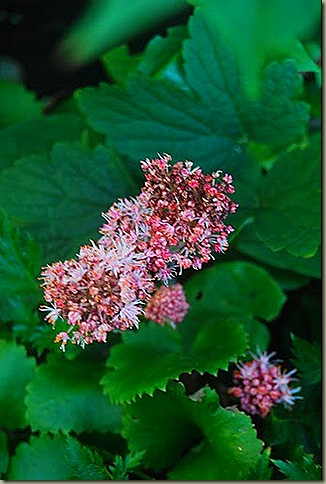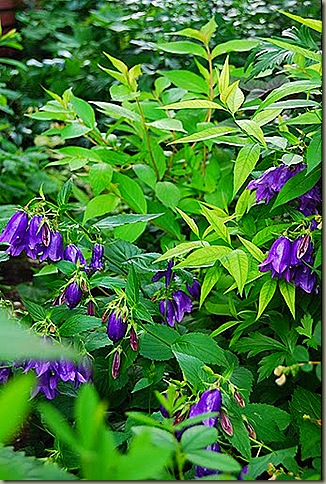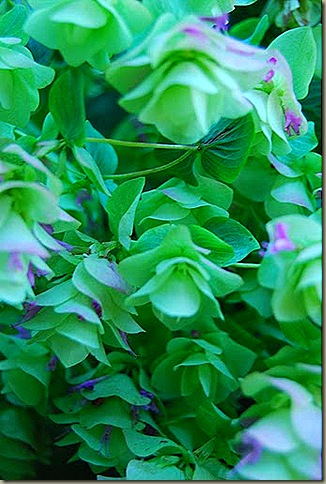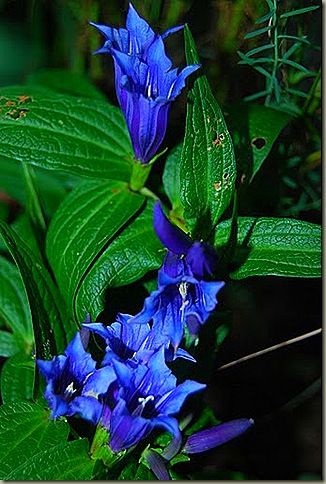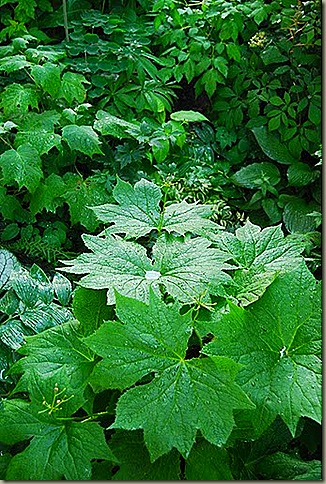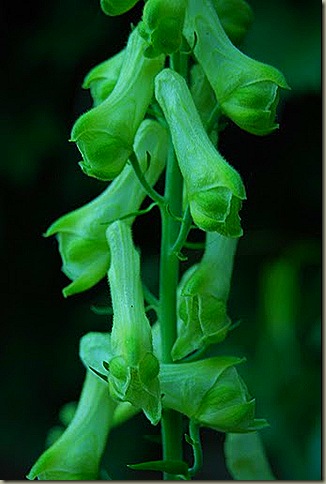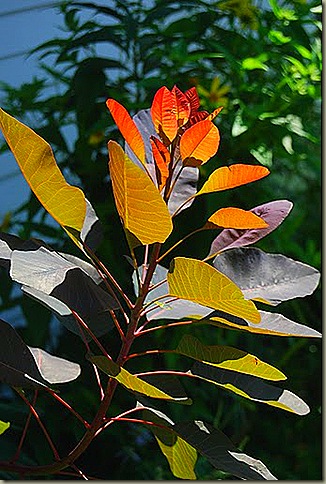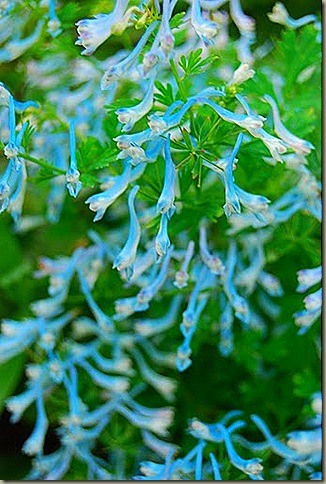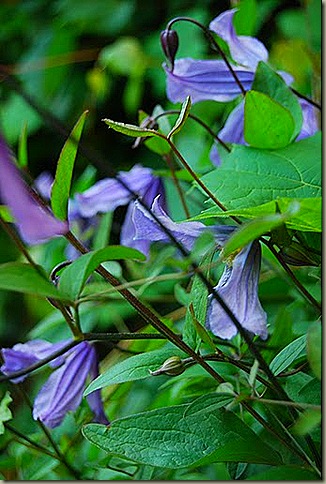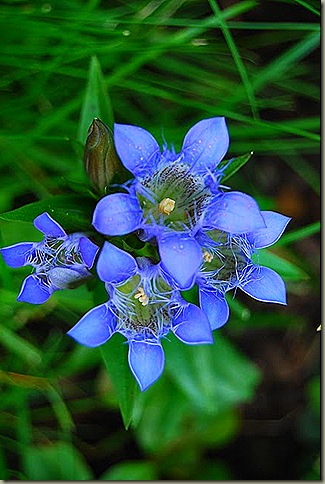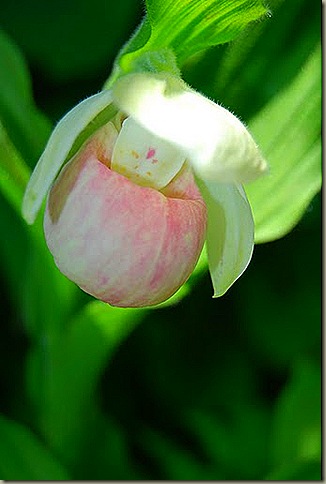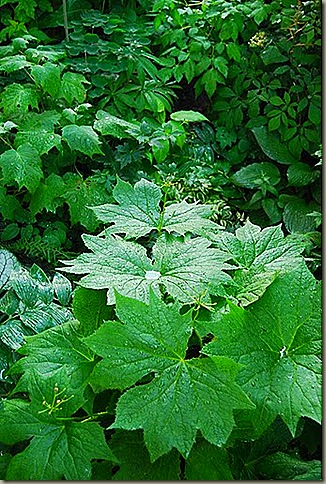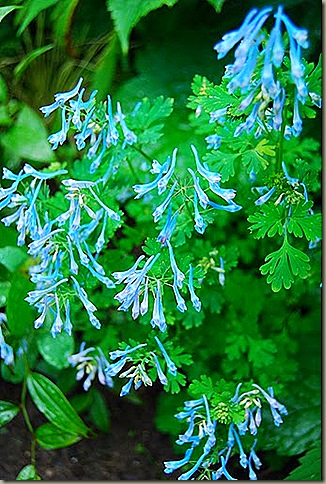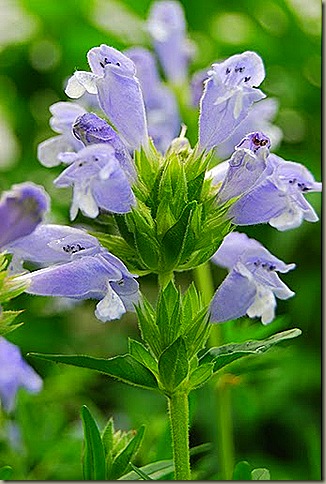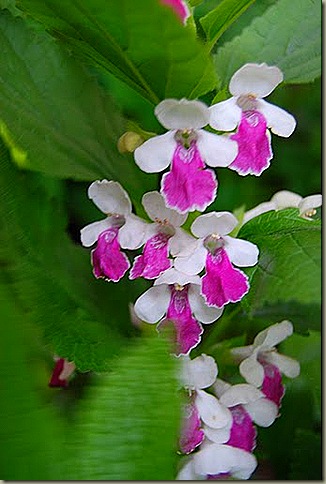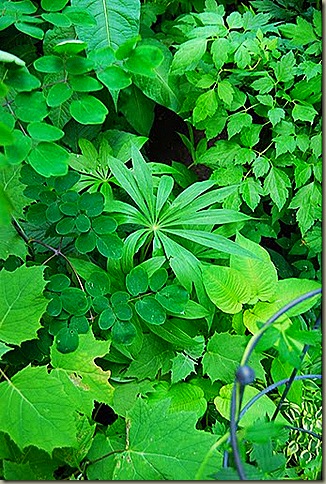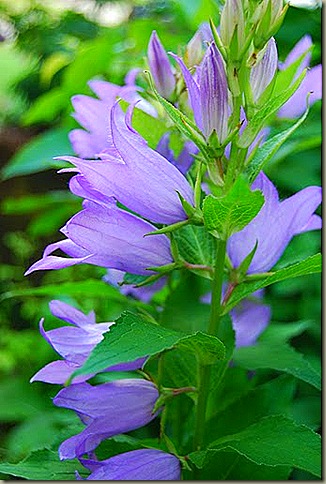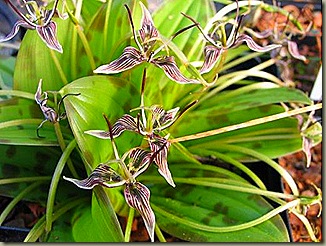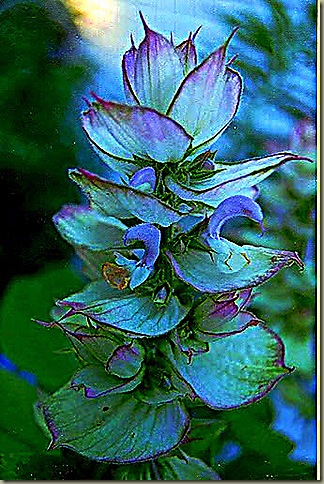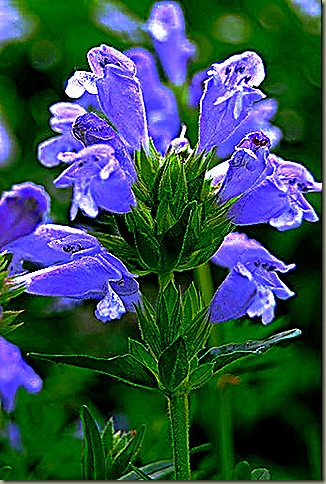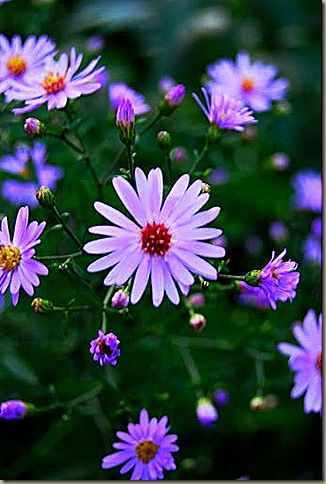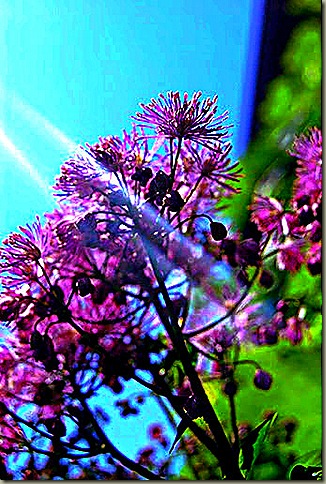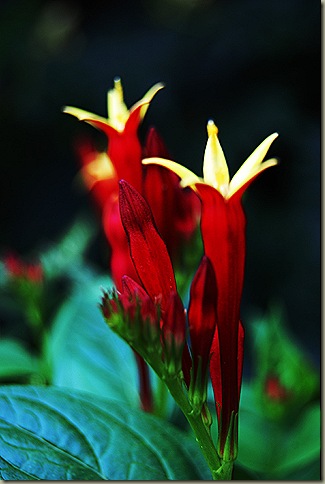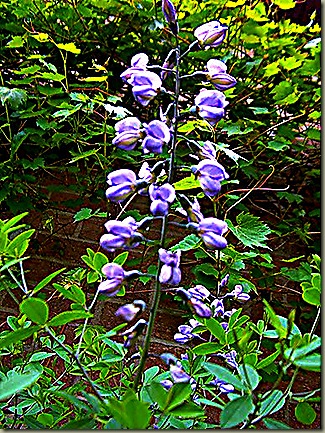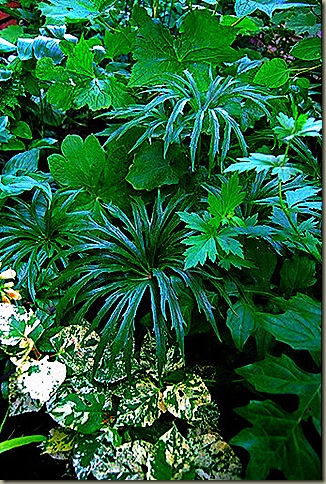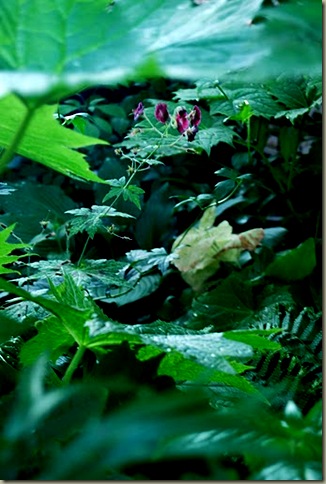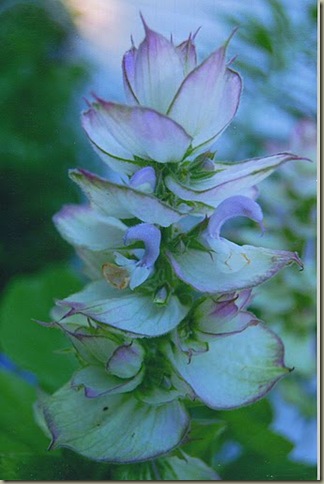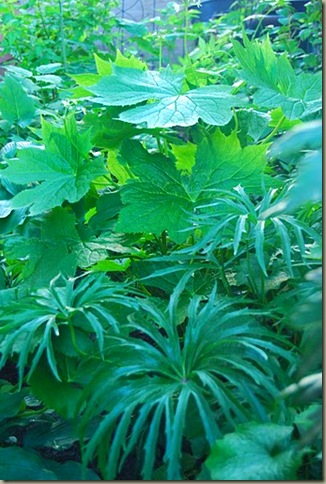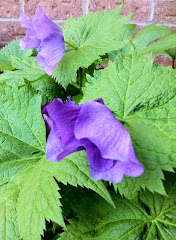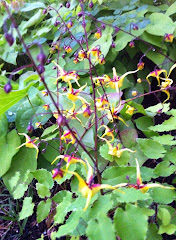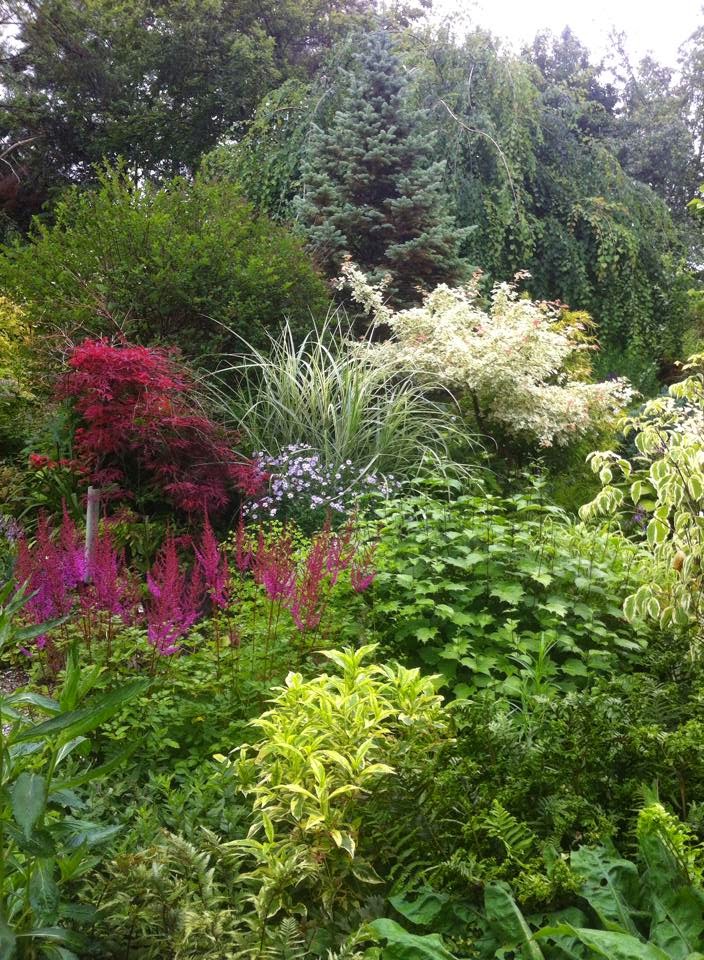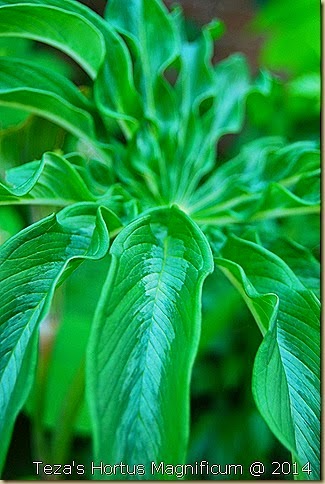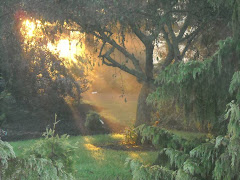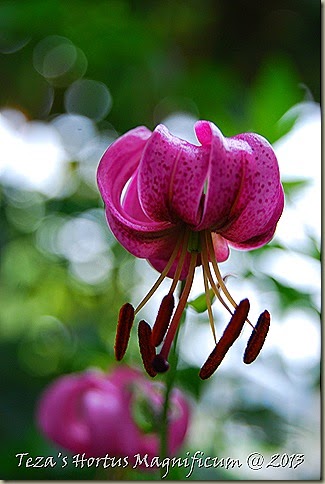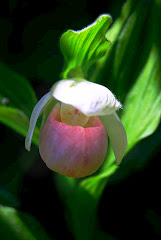27 Jan 2012
26 Jan 2012
Reading with Teza
The winter months allow me to catch up on my second favourite endeavor – reading - and this month has been most rewarding, especially with the potential arrival of two more books to add to my gardening collection!
 I am enthralled with the flora of Asia, with specific praise for the plants of China. Many visitors have commented that my garden might be a sliver of the ‘Mother of Gardens’ – as is how China has been referred to in many of my recent reading accounts. This new book co-authored by Christopher Grey-Wilson and Phillip Cribb [of ‘The Genus Cypripedium’ fame] touted to be the largest collection on this subject, is definitely a worthwhile addition!
I am enthralled with the flora of Asia, with specific praise for the plants of China. Many visitors have commented that my garden might be a sliver of the ‘Mother of Gardens’ – as is how China has been referred to in many of my recent reading accounts. This new book co-authored by Christopher Grey-Wilson and Phillip Cribb [of ‘The Genus Cypripedium’ fame] touted to be the largest collection on this subject, is definitely a worthwhile addition!
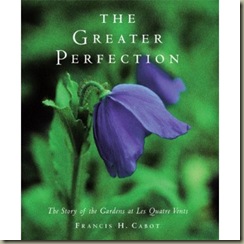 For two years I have been searching for ‘The Greater Perfection – The Story of the Gardens at Les Quatre Vents.’ Those who know me best would say it is because of the trademark Meconopsis on the front cover, but in truth, the entire garden fascinates me. I am looking forward to reading author Francis H Cabot’s description of not only the garden’s history, but also of it’s progression over the years as one of Quebec’s leading horticultural wonders!
For two years I have been searching for ‘The Greater Perfection – The Story of the Gardens at Les Quatre Vents.’ Those who know me best would say it is because of the trademark Meconopsis on the front cover, but in truth, the entire garden fascinates me. I am looking forward to reading author Francis H Cabot’s description of not only the garden’s history, but also of it’s progression over the years as one of Quebec’s leading horticultural wonders!
Are there any new gardening books that have piqued your curiosity of late?
22 Jan 2012
Where Have You Been All My Life?
Have you ever stumbled across a plant – something you’ve never seen before, but something nonetheless that by all rights should reside in your garden? Its one of those late night computer games I like to play when the mind is telling me I should head to bed, but the fever for new and exciting plants simply will not extinguish itself – if only for six or seven hours!
Take for example the smashing plant in the header photo for this post: Scoliopus bigelovii!
Scoliopus is a genus in the Liliaceae family with two species that are native to cool moist woodland in Oregon and California. They are one of the fringe geophytes with underground stems with numerous fleshy storage roots. They are known by common names of slink pod because of the long seed pod that "slinks" and buries the seed in the ground and fetid adders-tongue because they have a fetid scent although it is not very strong and you have to get very close to smell it. They bloom late winter to early spring, one of the early wildflowers in their native habitat. Scoliopus bigelovii is a northern coastal California species that is found in very wet habitats: mossy streambanks and moist, shady forests. [Pacific Bulb Society]
Scoliopus bigelovii comes from moist woodland areas in Oregon and California, flowering in late winter and early spring. It is proving to be hardy in British gardens when grown in cool acid woodland or peat-bed conditions, appreciating partial shade where it may gently seed itself about. When grown in the open garden, protection from slugs is advised as the seed pods push themselves downwards towards the soil prior to releasing the seed, making them virtual gastropodic picnic baskets. This seed dispersal method resembles that of Trillium rivale and although the floral parts of Scoliopus superficially resemble those of a Trillium, both are thought to be coincidental; they are not botanically related, Scoliopus being closer to the genera Calochortus and Tricyrtis in the Liliaceae.
The colour of the beautifully marked flowers, with their broad recurved petals, can vary not only in the shade of yellow in the background but also in the amount of brown streaking and spotting. Unerringly constant however, is the reminder of its colloquial name 'Fetid adders-tongue'....... it stinks! Just a few open flowers in my greenhouse was enough to announce their arrival. The odour is best described as that of a wet dog (that has also rolled in something nasty), necessary to attract carrion beetles, its putative pollinators.
Despite this failing, it does make an excellent pot plant for the alpine house giving a much needed lift to the cold dark days at the start of the year. [Alpine Garden Society]
I think I’m in love! Falling somewhere on the scale between Trillium and Tricyrtis, how could I not? Now if I only knew the directions to my ‘Alpine House.’ I know it is around here somewhere.
19 Jan 2012
‘When Teza’s Garden Tangoed with PhotoShop!’
Lets get something straight, right from the hop! I am not a fan of PhotoShop when it comes to the garden! How many time have I overheard someone say: ‘But that’s not what the picture on the tag looks like!’ Really? I guess this is why I prefer a simple tag: Botanical Latin name, and price. This way I have to do my own homework! Hopefully I will have discovered what the plant in question will look like in bloom [a shout out for display gardens!] or, if I’m particularly lucky, there will be one in bloom in the tray that I am choosing from! Having said that…… the thought of PhotoShop engaged in a seductive Tango here in Teza’s Garden….. lets just say the results could be stunning, if not entirely unrealistic!
 Hakonechloa macra ‘All Gold’ and Cornus alternifolia ‘Golden Shadows’
Hakonechloa macra ‘All Gold’ and Cornus alternifolia ‘Golden Shadows’
While it is true that this photo, in reality, did afford me a mesmerizing example of the contrast between leaf colouration, the deep wine in the foreground, the delightful pink blush in the background, it now takes on the feel of a painting!
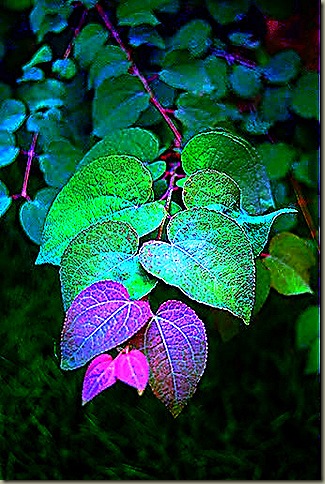 Cercidiphyllum japonicum ‘Rotfuchs’ [Red Fox]
Cercidiphyllum japonicum ‘Rotfuchs’ [Red Fox]
For those who have problems with Cercis, I would strongly suggest this beautiful tree, whose leaves, albeit smaller in surface area that the Cercis, still have that wonderful heart shape to them. With this cultivar in particular, new foliage is a deep purple colour with gold veining! Spectacular without the assistance of PhotoShop!
 She who needs to assistance from PhotoShop….. but still, I could not resist! If you’re going to be a rebel, do so confidently!
She who needs to assistance from PhotoShop….. but still, I could not resist! If you’re going to be a rebel, do so confidently!
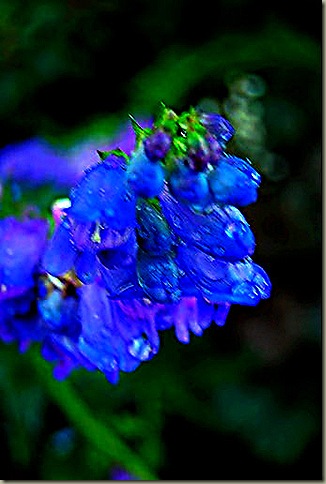 Beware the tags that offer saturated blues like this photo! Granted, the flowers are decidedly more blue than purple, in reality this is just a visualization of a dream that keeps looping through my subconscious!
Beware the tags that offer saturated blues like this photo! Granted, the flowers are decidedly more blue than purple, in reality this is just a visualization of a dream that keeps looping through my subconscious!
And then there is this…… a unique and hard to find plant that doesn’t need any bloody dance lessons, let alone a tango!
To highlight a special effect, such as the foliage of ‘Grace’, sometimes it ‘helps’ to do the Tango, but only to ‘highlight’ an already unique photograph. So many of my pictures catch me off guard!
I enjoy this little known Aster. ‘Little Carlow’ is very popular amongst English gardeners, but is still relatively uncommon here. Such a pity considering its highly mildew resistant foliage, and stunning iridescent flowers!
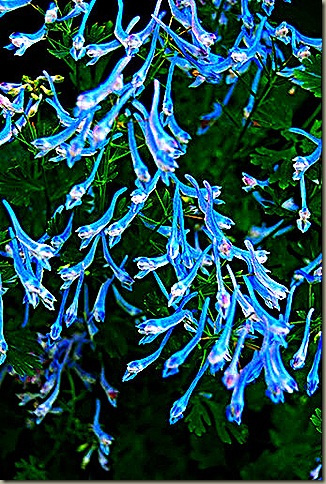 ‘Cory, are you shimmering, or are you just happy to see me!’
‘Cory, are you shimmering, or are you just happy to see me!’
Truth be told, his flowers truly are of an icy blue opalescence! He is single-handedly responsible for my obsession with all flowers blue!
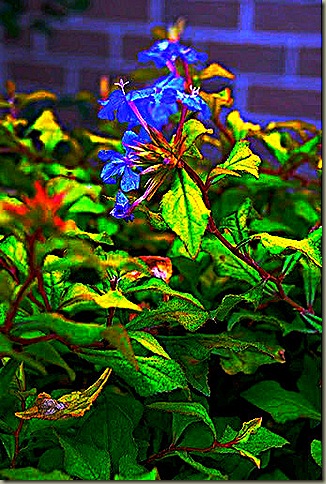 ‘My God, that flower is so blue, why it’s casting a shadow on the brick!’
‘My God, that flower is so blue, why it’s casting a shadow on the brick!’
Why yes, yes it is! Ceratostigma willmottianum ‘My Love’ captured my immediate attention with its combination of fabulously chartreuse foliage and sky blue flowers, to say nothing of it’s ruby infused stems and branches! Tender as she is [reputedly Zone 7] I cannot live without her presence gracing Teza’s Garden!
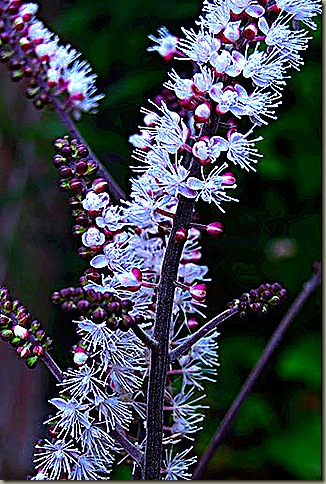 Actaea simplex ‘Hillside Black Beauty’
Actaea simplex ‘Hillside Black Beauty’
It’s beauty is only transcended by the intoxicating aroma of these mesmerizing flower spikes! A late summer, early Fall bloomer here in Teza’s Garden, if you’ve got a spot close to where people congregate, plant it and sit back and be amazed as people crane their necks to detect where the delicious fragrance is coming from!
![DSC_0550[1]_edited-1 DSC_0550[1]_edited-1](http://lh3.ggpht.com/-Yg9SY2WRnFw/Txg7ujN8KxI/AAAAAAAAg4I/icA-FdotF40/DSC_0550%25255B1%25255D_edited-1_thumb%25255B2%25255D.jpg?imgmax=800) The Bold Foliage of the Shaded Walk
The Bold Foliage of the Shaded Walk
When I set out the create the Shaded Walk, I knew that one of its unique features, aside of being filled with rare and unusual plants, would be that the majority of said plants would boast bold foliage! Diphylleia cymosa, a grealy under used and under appreciated native was the ideal perfect fit!
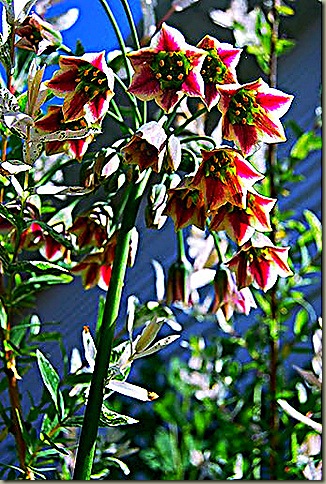 Nectaroscordum siculum ‘Bulgaricum’
Nectaroscordum siculum ‘Bulgaricum’
Granted, though I describe it as a vampire’s perfect lair, there is a good deal of morning sun that filters into the garden, and it is at this time of day when this wonderful bulb looks it’s absolute best!
I mentioned those photographs that catch me off guard. This shot of the gentle finger’s of morning sunlight caressing the unique flowers of one of many Thalictrum here in Teza’s Garden left me somewhat speechless. In reality, it had been nothing more than point, focus and shoot! With or without Tango lessons, it remains a personal favourite!
A recent shout-out from Joy, reminded me that even the most fickle of gardeners can have a sudden change of heart. There was a time when I would hard pressed to be able to point out a flower with a red or yellow flower in my garden repertoire. Too bright! Too garish! I like flowers to show off in an understated way – by their uniqueness and or rareness. Leave the bright and sassy flowers for the sunny borders! Oh yes, this gardener comes with more biases and idiosyncrasies than you could ever imagine! And then, along came my Spi Guy as I now lovingly refer to this North American native as!
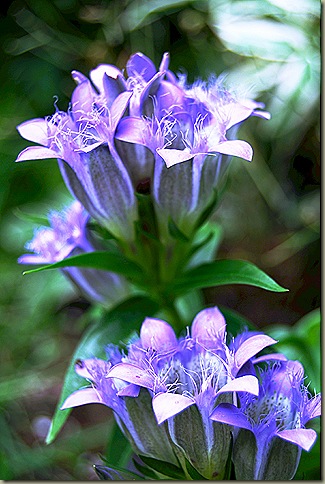 Gentiana septemfida var. Lagadochiana Select
Gentiana septemfida var. Lagadochiana Select
The faster you Tango with PhotoShop@ the more startling the results! Goodness me, these blooms look as if they might melt with too much sunlight. Lucky for me they are more than happy in partial shade!
The very first photo ever taken during the creation of Teza’s Garden! I remember it as though it were yesterday!
A favourite to help accentuate the importance of texture when creating a shade garden. Syneilesis causes a stir from the time it emerges from the ground in Spring, all fuzzy, furry tiny little aliens, through its awkward ‘I look like the umbrella you find in those fancy pink drinks!’ right up until it looks like this, boldly demanding an audience with everyone who should stumble upon it unsuspectingly – a relatively common occurrence here in Teza’s Hortus Magnificum [the reason behind the name!]
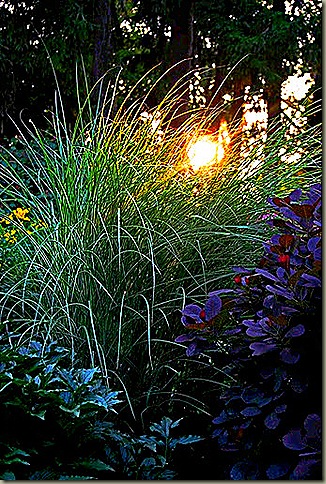 ‘In The Gloaming: The Shaded Sanctuary’
‘In The Gloaming: The Shaded Sanctuary’
and lastly, one for Joy! I too am a huge fan of this photo, captured on the anniversary of my Grandmother’s death in the previous garden of two of my favourite garden friends.
So… no more Tangos with PhotoShop! Are you people who make plant tags listening! Give us the real deal or give us nothing at all!
18 Jan 2012
Joan Didion: l’heure bleue
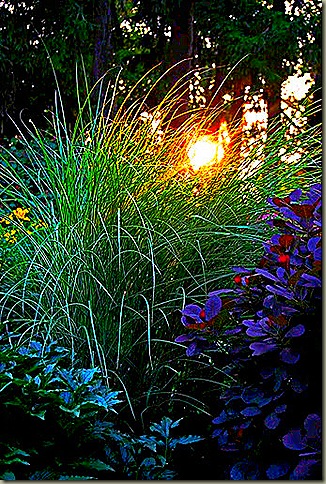 ‘….You pass a window, you walk to Central Park, you find yourself swimming in the color blue: the actual light is blue, and over the course of an hour or so this blue deepens, becomes more intense even as it darkens and fades. approximates finally the blue of the glass on a clear day at Chartres, or that of the Cerenkov radiation thrown off by the fuel rods in the pool of nuclear reactors. The French call this time of day ‘l’heure bleue.’ To the English it was ‘the gloaming.’ The very word ‘gloaming’ reverberates, echoes- the gloaming, the glimmer, the glitter, the glisten, the glamour – carrying in its consonants the images of houses shuttering, gardens darkening, grass lined rivers slipping through the shadows….’
‘….You pass a window, you walk to Central Park, you find yourself swimming in the color blue: the actual light is blue, and over the course of an hour or so this blue deepens, becomes more intense even as it darkens and fades. approximates finally the blue of the glass on a clear day at Chartres, or that of the Cerenkov radiation thrown off by the fuel rods in the pool of nuclear reactors. The French call this time of day ‘l’heure bleue.’ To the English it was ‘the gloaming.’ The very word ‘gloaming’ reverberates, echoes- the gloaming, the glimmer, the glitter, the glisten, the glamour – carrying in its consonants the images of houses shuttering, gardens darkening, grass lined rivers slipping through the shadows….’
from the book ‘Blue Nights’ @2011
